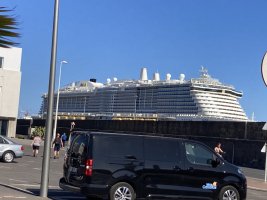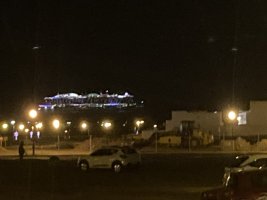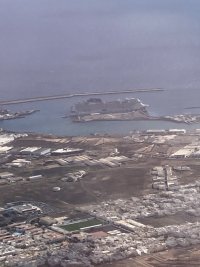Sink the Moskva!
13 April 2022 was, probably, the worst day to try to scupper the Moskva cruiser - the weather was foul.

www.pravda.com.ua
"We did not have over-the-horizon radar at the moment of the invasion, and Russia knew this. But as the clouds were hanging very low, and the signal had nowhere to go from this corridor between the water and the clouds, the radar unexpectedly reached the Moskva," Ukrainska Pravda’s source explained.
The Russians were so confident of the fact that they were out of reach for Ukrainian forces that they probably had not even activated air defence systems, as our sources assumed. However, even if they had, they would have had big troubles with the Neptune missiles.
"The Neptune is a subsonic missile that runs on liquid fuel and sneaks up on a ship unnoticed until the very last moment. Until it is already too late. Conventional air defence systems are not capable of detecting it, because it flies above the water level," one of Ukrainska Pravda’s sources from members of the National Security and Defence Council of Ukraine explained.
Western media outlets have their own version of the events that occurred.
According to
The New Yorker, Ukraine sent a request to NATO’s European centre to confirm the coordinates of the target and received it.
The New York Times stated that a P-8 Poseidon reconnaissance aircraft was involved in performing Ukraine’s request. It was this aircraft that provided the exact coordinates. The specialist publication
Navy Recognition stated the same thing.
However, people within Ukrainian military circles are sceptical about excessive exaggeration of the allies’ part in this.
"All these stories about how ‘big bosses’ are helping us are just playing into Russia’s hands. In fact, we are capable of solving tasks of unimaginable complexity ourselves. Well, do you really think that the Moskva flagship was hard to find? This is a 120-metre long mountain of iron and electronics in the small Black Sea. It can be detected by any satellites in any range. We have seen and detected it all this time," one of Ukrainska Pravda’s sources in the military leadership said indignantly.
"We obtain data from several dozen satellites, and now Prytula [Serhii Prytula - a Ukrainian volunteer who collected funds for Bayraktar UAVs and bought a satellite for Ukrainian army - ed.]
has bought yet more. The problem was not in finding the Moskva but in reaching it," he added.
And the Russian flagship unexpectedly sailed into the destruction zone of Ukrainian missiles itself on 13 April. As soon as it was detected, two Neptunes were launched at approximately 16:00, which flew one after another towards the Moskva.













